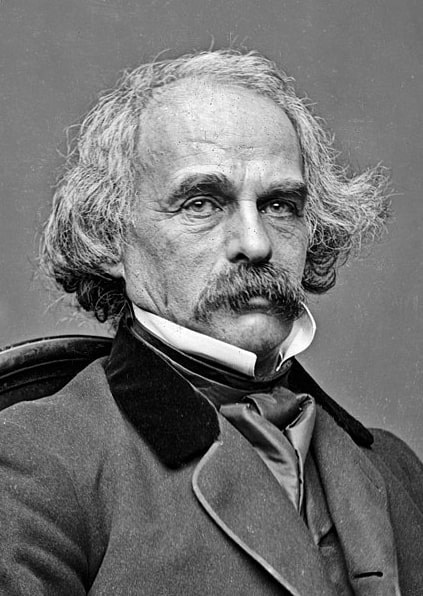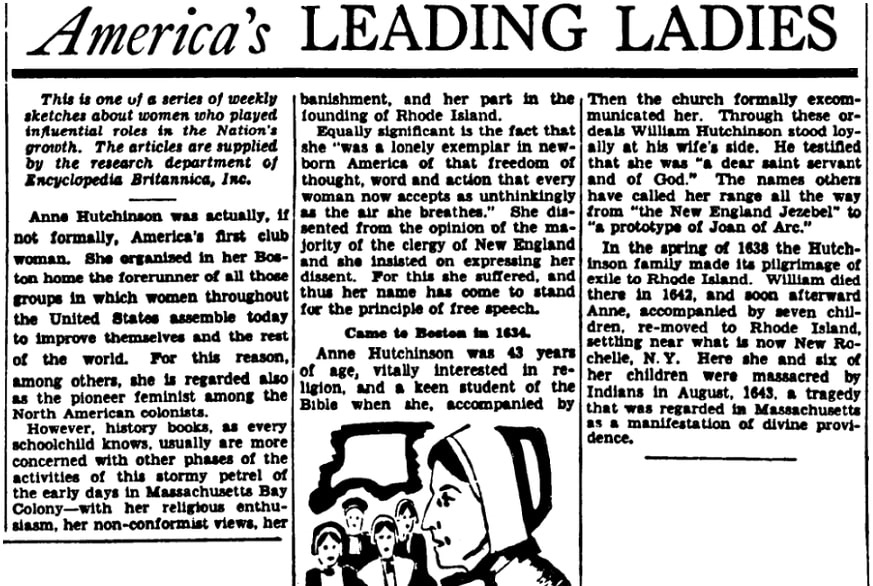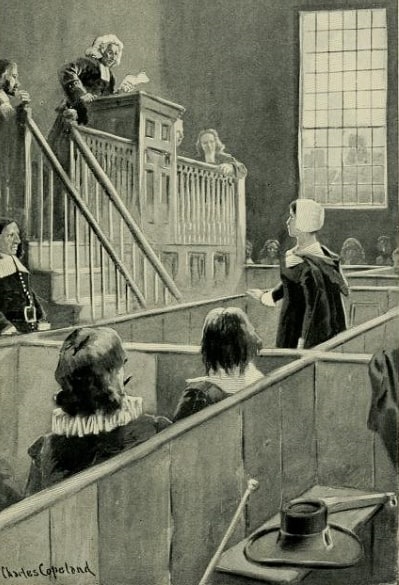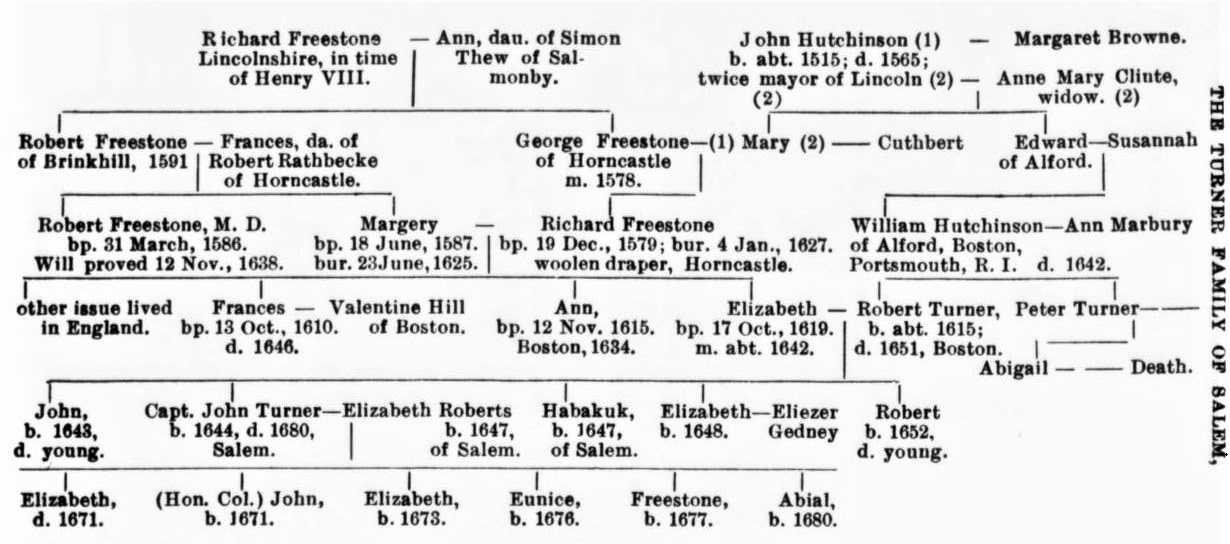Introduction: In this article, Melissa Davenport Berry concludes her story about a controversy in Salem, Massachusetts, over the treatment of some Quaker tombs in 1835, focusing on the family lines of author Nathaniel Hawthorne. Melissa is a genealogist who has a blog, AnceStory Archives, and a Facebook group, New England Family Genealogy and History.
Author’s Note: I came across this story while researching the 17th century Quaker families in Salem, Massachusetts. They are the ancestors of the tombs in Salem that are the focus of today’s story. A list of these Salem Quakers can be found in Jonathan M. Chu’s book Neighbors, Friends, or Madmen: The Puritan Adjustment to Quakerism in Seventeenth-Century Massachusetts Bay (p. 169-173). These Quakers are also cited in the court documents available online at the University of Virginia site.
“The Quakers, esteeming persecution as a divine call to the post of danger, laid claim to a holy courage, unknown to the Puritans themselves…”
–Nathaniel Hawthorne

To conclude my recent series on the tombs scandal in Salem, Massachusetts (see links at the end of this article), today I am covering the first generations of the family lines of the tombs’ owners. Many were persecuted Quakers and blood relations to author Nathaniel Hawthorne (who added a “w” to his family surname of “Hathorne”). The passage above is from Nathaniel’s story “The Gentle Boy,” sourced from the early histories of the 17th century Quakers.
I begin with Nathaniel’s gr. great grandmother, Quakeress Elizabeth Freestone Turner Gardner (1619-1665). She married 1st Robert Turner and 2nd George Gardner. Her daughter Ruth Gardner by her second husband married Judge John Hathorne, noted for his connection in the 1692 Salem Witch Trials – actions for which Nathaniel’s ancestor never repented.
Judge Hathorne’s father, Major William Hathorne, was called a bitter persecutor of Quakers by Nathaniel Hawthorne. Nathaniel’s grandmother Rachel Phelps, wife of Daniel Hathorne, descends from the Phelps family who played host to illegal Quaker meetings raided by orders of Major Hathorne.
Elizabeth (Mrs. George Gardner) is cited several times in the Essex County Court records for absence from the Puritan church meetings and for attending the “outlawed” private Quaker meetings held in the Phelps home.
Elizabeth was also cited for attending Quaker meetings in the home of Lawrence and Cassandra Southwick. You can view the cited cases in the “Records and Files of the Quarterly Courts of Essex County, Volume II” on the University of Virginia website.
Elizabeth’s fines paid to the courts totaled over 24 pounds, quite a hefty sum for that time. (Chu, Jonathan: Neighbors, Friends, or Madmen: The Puritan Adjustment to Quakerism in Seventeenth-Century Massachusetts Bay, p. 172)
It is no surprise Elizabeth deviated from the conventional Puritan sect. During her first years in Massachusetts, she lived in the home of her aunt Anne Hutchinson. Hutchinson hosted private religious meetings in her home; she was noted in the Evening Star as America’s first “club woman.”
This article reported:
“Anne Hutchinson was actually, if not formally, America’s first club woman. She organized in her Boston home the forerunner of all those groups in which women throughout the United States assemble today to improve themselves and the rest of the world. For this reason, among others, she is regarded also as the pioneer feminist among the North American colonists.”

According to this article:
“She lived at Boston only four years, but that was quite long enough for the great religious controversy, in which she was the central figure, to rock the colony from top to bottom… She talked about a “covenant of grace” as opposed to a “covenant of works.” She taught that holiness consisted of a state of heart, not of good works… This philosophy was a protest against the legalism of the Puritans and a blow against the authority of the clergy.”

I found an interesting article in the Boston Herald on early tavern and house owners in Boston who supported Anne Hutchinson. Although she began her spiritual teachings with women, she would catch the ears of several prominent men.

This article reported:
“At this time Anne Hutchinson’s Antinomian heresy sprang up, and the colony was disturbed by a religious dispute, never fully understood then or now, a war of words. The question whether ‘sanctification helps to evidence to us our justification’ has not yet been settled. Mrs. Hutchinson’s neighbors generally took her side, and were frowned upon and punished by the magistrates.”
The Turner family were neighbors of Anne Hutchinson. Robert Turner married her niece Elizabeth Freestone (Nathaniel Hawthorne’s gr. great grandmother).
Robert was a shoemaker and purchased property from his brother-in-law, Valentine Hill, husband to Francis Freestone, Elizabeth’s sister.
I found a Boston Herald article citing Robert Turner in his trade.

It reads:
“By an order of the General Court in October, 1648, the shoemakers of Boston were incorporated, on a petition signed by Richard Webb, James Everett, Robert Turner and Edmund Jackson, and these men were empowered to regulate the ‘shew’ trade for three years.”
Shoemaker Robert Turner’s house was sold in 1651 to Thomas Roberts, a felt maker and father to Elizabeth Roberts – who married John Turner, son of Robert and Elizabeth Turner. John built the Salem home on Turner Street made famous by Nathaniel Hawthorne’s novel The House of the Seven Gables.
Two of Elizabeth’s children carried on her namesake. Both Ruth Hathorne and John Turner II named their last child Freestone.
Stay tuned for more genealogy on these family lines…
Note: Just as an online collection of newspapers, such as GenealogyBank’s Historical Newspaper Archives, helped tell the stories of Nathaniel Hawthorne’s early Salem family line, they can tell you stories about your ancestors that can’t be found anywhere else. Come look today and see what you can discover!
Genealogy
Robert and Elizabeth (Freestone) Turner:
Their children (records from Colonial Society of Massachusetts)
- John Turner, merchant, married Elizabeth, daughter of Thomas and Eunice (Browne) Roberts
- Habakkuk Turner, sea captain, merchant, and partner with brother John, married Mary Gardiner, daughter of George (2nd husband of Elizabeth Freestone)
- Elizabeth Turner married wealthy shipwright Eleazer Gedney, who owned the Gedney House in Salem
Here is a family tree for the Turner family of Salem, Massachusetts:

Related Articles:

This is a great story with facts and really interesting details; thank you for sharing. I was adopted, and I am searching for my father. My birth certificate says my real last name was Gardner. I met the man; he claims he’s not my father. Now I am doing a DNA search so I will know.
Lisa, thank you for sharing and please keep us posted on your findings. Love to know more. Please reach out if you need any help with research. I will be working on Gardner again so stay tuned!
Fascinating. Anne Hutchinson is one of my ancestors. I have been a member of GenealogyBank for years and never realized you had a monthly newsletter. Thank you.
Hi Joyce. Glad you enjoyed the story on your ancestor Anne Hutchinson. I know she only stayed in Boston a few years but she blazed quite a trail! And was a mentor for many! Thank you for the comment.